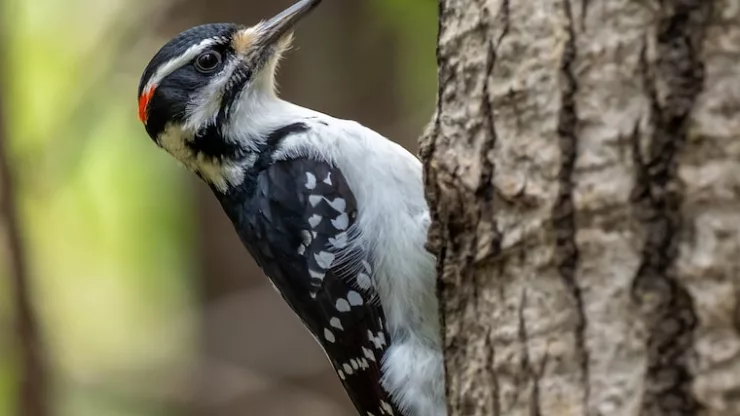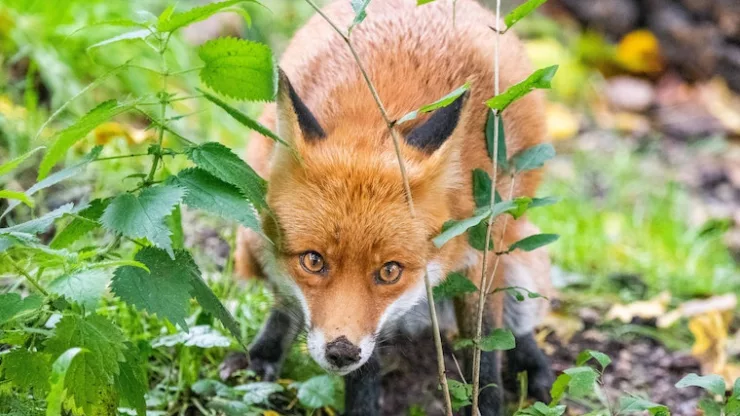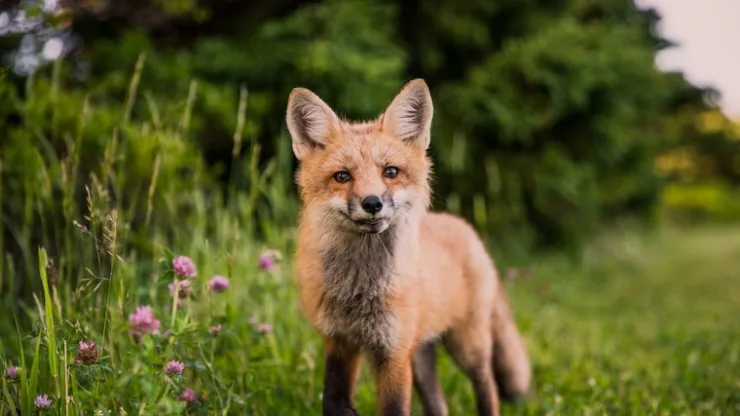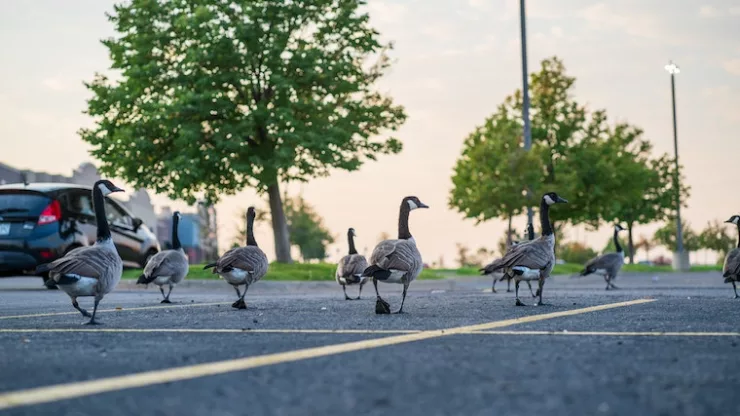Throughout many urban areas, the sound of a woodpecker’s persistent tapping can be heard.
Despite the urban sprawl and concrete jungles, woodpeckers have adapted to living in cities and have made a home in urban trees.
These fascinating birds not only add to the charm and diversity of city life but also play a crucial role in maintaining and preserving urban tree ecosystems.
Jump to Section
Introduction
Woodpeckers are unique birds that have evolved to live in a variety of environments, including urban areas.
In fact, many species of woodpeckers have adapted to living in cities, where they can be seen chiseling away at tree trunks and branches.
While some may see them as a nuisance, woodpeckers play an essential role in maintaining urban tree health and controlling insect populations.
Understanding Urban Woodpeckers
Urban woodpeckers are not a separate species but rather a group of woodpeckers that have adapted to living in urban environments.
These birds have learned to exploit the resources found in cities, such as the abundance of trees, food sources, and nesting sites.
Although they may face some challenges, such as habitat loss and predation, urban woodpeckers have found ways to thrive in the concrete jungle.
The Role of Urban Trees in Woodpecker Habitats
Urban trees play a crucial role in providing habitat for woodpeckers.
These trees provide food, shelter, and nesting sites for woodpeckers, making them an essential part of the urban ecosystem.
Types of Trees that Attract Woodpeckers
While woodpeckers are known to tap on many types of trees, certain species are more attractive to them than others.
Some of the trees that are most likely to attract woodpeckers include oak, maple, birch, and pine trees.
These trees have soft bark, making it easier for woodpeckers to chisel away at them to find insects and other food sources.
The Importance of Dead Trees in Urban Areas
Dead trees, also known as snags, are vital to the survival of woodpeckers in urban areas.
These trees provide nesting sites for woodpeckers, as they have soft, rotting wood that is easy to excavate.
Additionally, dead trees attract insects, which are a primary food source for woodpeckers.
The Benefits of Urban Woodpeckers
Urban woodpeckers provide several benefits to the urban ecosystem, including controlling insect populations and helping to maintain tree health.
Controlling Insect Populations
Woodpeckers are known for their ability to control insect populations. These birds have long tongues that they use to extract insects from deep within tree bark.
By feeding on insects, woodpeckers help to keep populations in check, preventing them from causing damage to urban trees.
Helping to Maintain Tree Health
Woodpeckers also play an essential role in maintaining tree health.
By tapping on trees, they create small holes that allow air and water to circulate, preventing the buildup of harmful fungi and bacteria.
Additionally, by removing dead and decaying wood, woodpeckers help to prevent the spread of disease in urban tree populations.
Challenges Facing Urban Woodpeckers
Despite their ability to adapt to urban environments, urban woodpeckers face several challenges, including habitat loss and fragmentation, predation, and competition.
Habitat Loss and Fragmentation
As cities continue to grow, the natural habitats of woodpeckers are being destroyed, leading to habitat loss and fragmentation.
This loss of habitat can make it more difficult for woodpeckers to find suitable nesting sites and food sources.
Predation and Competition
Urban woodpeckers also face predation and competition from other bird species in urban areas. Hawks, owls, and other predators may prey on woodpeckers, while other species, such as starlings and pigeons, may compete with woodpeckers for nesting sites and food sources.
Conservation Efforts for Urban Woodpeckers
Several conservation efforts are underway to protect urban woodpeckers and their habitats.
Creating Woodpecker-Friendly Urban Environments
One way to protect urban woodpeckers is by creating woodpecker-friendly urban environments.
This can be done by preserving dead trees, planting trees that are attractive to woodpeckers, and creating nesting sites for these birds.
Monitoring and Research Efforts
Monitoring and research efforts are also being conducted to better understand urban woodpecker populations and their habitats.
This research can help to identify threats facing woodpeckers and guide conservation efforts.
Conclusion
Urban woodpeckers are fascinating birds that have adapted to living in cities and have become an integral part of the urban ecosystem.
By controlling insect populations and helping to maintain tree health, woodpeckers play an essential role in preserving the urban tree canopy.
Protecting urban woodpeckers and their habitats is crucial for maintaining healthy and diverse urban ecosystems.
FAQ
What do urban woodpeckers eat?
Urban woodpeckers primarily feed on insects, such as beetles and ants, which they extract from tree bark with their long tongues.
How do woodpeckers tap on trees without hurting themselves?
Woodpeckers have several adaptations that allow them to tap on trees without injuring themselves.
These adaptations include a thick skull, a long tongue that wraps around their brain, and strong neck muscles that cushion the impact of their tapping.
How can I attract woodpeckers to my backyard?
To attract woodpeckers to your backyard, you can plant trees that are attractive to them, such as oak, maple, birch, and pine trees.
Additionally, you can provide nesting sites by hanging up woodpecker nest boxes and feeders.
Are woodpeckers endangered?
While some species of woodpeckers are endangered, many species are not. However, habitat loss and fragmentation are significant threats facing woodpeckers, particularly those living in urban areas.
I’m a nature enthusiast and creator of Metro Wilds and have spent years exploring the great outdoors.
With a passion for environmental conservation and sustainability, I have dedicated my career to writing about the beauty and wonders of nature, as well as the threats facing our planet.
Contact me at [email protected] for assistance.





